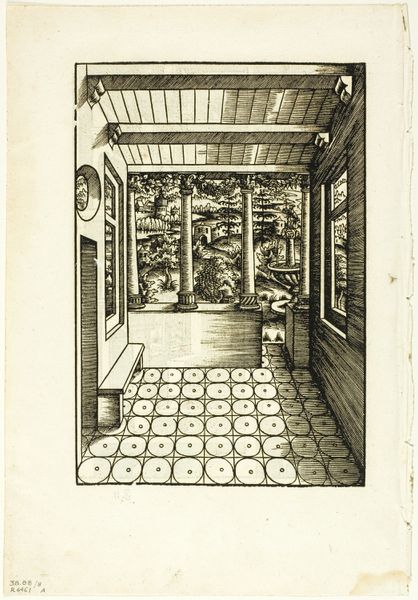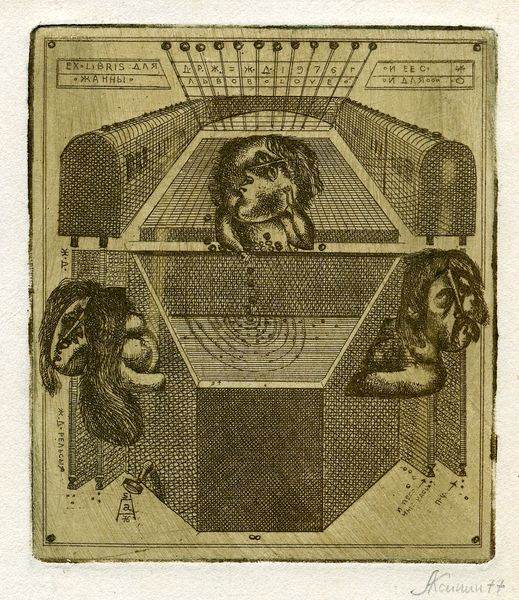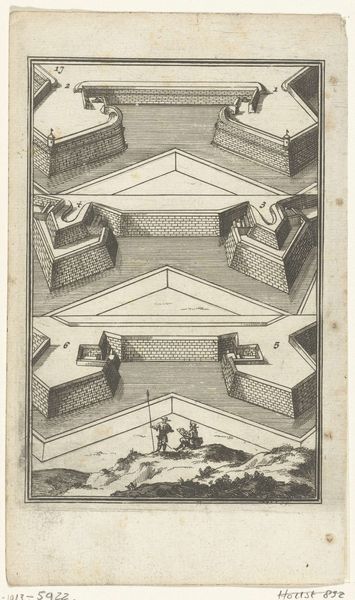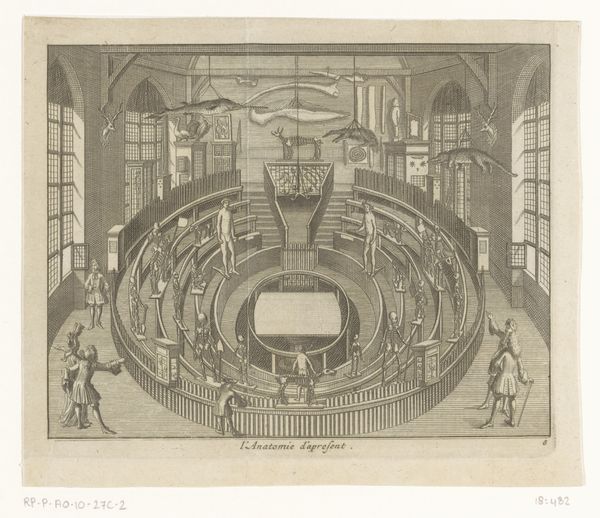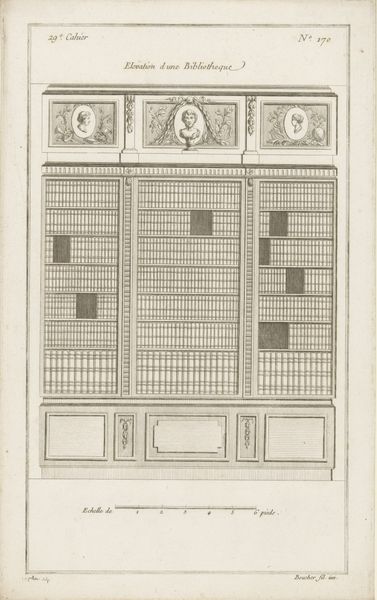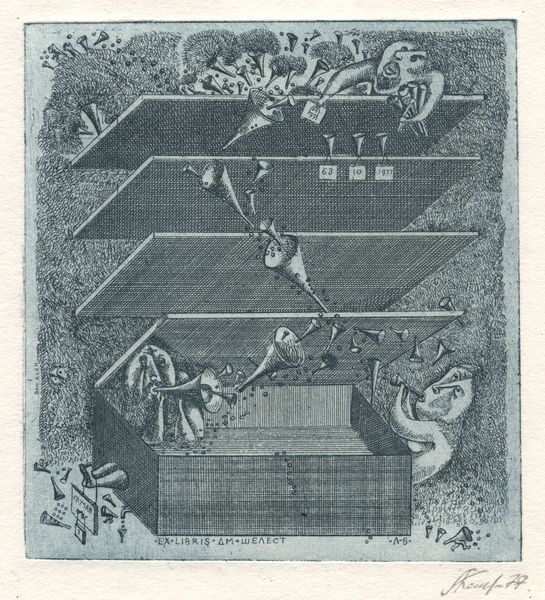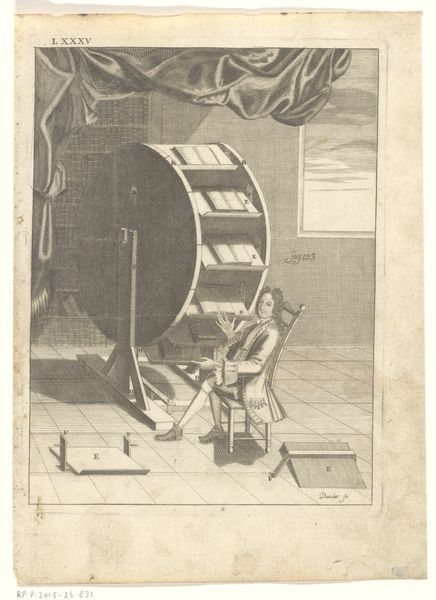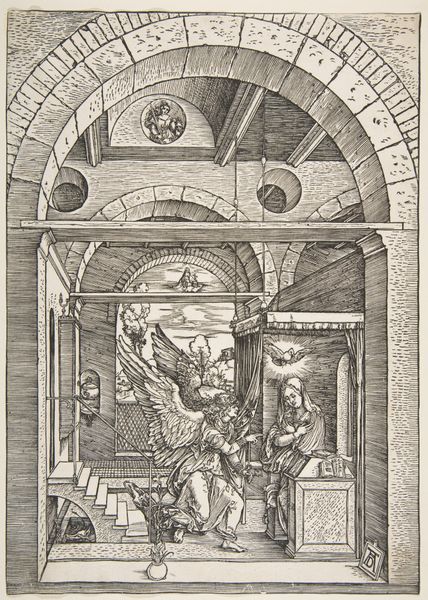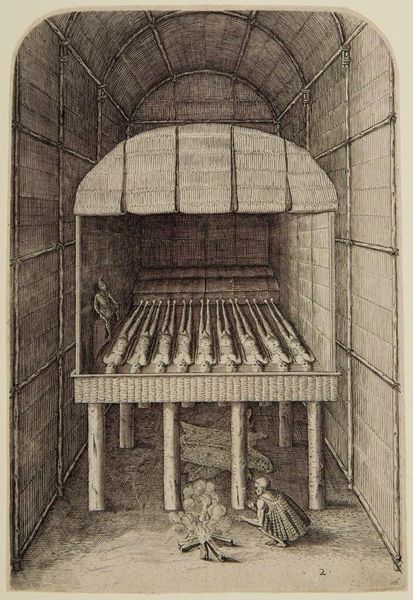
drawing, print, etching, intaglio, ink
#
portrait
#
drawing
#
blue ink drawing
# print
#
etching
#
intaglio
#
figuration
#
ink
#
geometric
Copyright: Oleksandr Aksinin,Fair Use
Curator: This intriguing print, created in 1976 by Oleksandr Aksinin, is entitled "Exlibris of A.Tsytovych." It employs intaglio and etching in ink, primarily blue. Editor: My immediate impression is of something…clinical. Restrained, perhaps. The blue tonality certainly contributes to that. Yet, there is this persistent symbolic language throughout its composition that undermines the stoicism and adds a somewhat surreal complexity. Curator: Indeed, Aksinin often imbued his works with symbolic meaning. Note the perspective. We’re looking into a receding space—presumably a library or study, if the title is a guide. Editor: And observe the meticulously rendered details. The texture, the weight and interplay of light and shade cast in intaglio! I can see a figure seated at a desk, almost puppet-like in appearance, surrounded by open books that display text—clearly, a figure consumed by learning. Curator: Aksinin lived and worked under Soviet rule, and many view his art as coded resistance to the prevailing cultural dogma. Considering the sociopolitical context, is the library not a sanctuary, but potentially also a prison? Editor: I hadn't thought of it that way. So, is the clinical quality reflecting oppression instead of some sort of Enlightenment ideal? Is that the function of Aksinin including the books in a place such as a library with such geometric rigidity? It would be a radical statement at the time... Curator: Precisely. He presents the individual, represented in such geometric format, surrounded by the trappings of intellect but somewhat… detached. Isolated by their own knowledge or beliefs. The geometric rigidity adds to that visual narrative and highlights how rigid Soviet social policies were. Editor: So, by understanding Aksinin’s background and historical moment, it’s clear how a library transforms into a potent symbol of controlled intellectualism, rather than enlightenment? It adds layers to his already meticulously organized piece. Curator: Exactly! And seeing the composition and technical detail makes a painting as complex and subtle as that even more intriguing, if one considers the setting and time it was created in. Editor: True! From a simple clinical first impression, one can see the rigidness inherent to the composition to give that feeling of restriction to Aksinin's society. A very evocative piece, when one contextualizes its production.
Comments
No comments
Be the first to comment and join the conversation on the ultimate creative platform.
